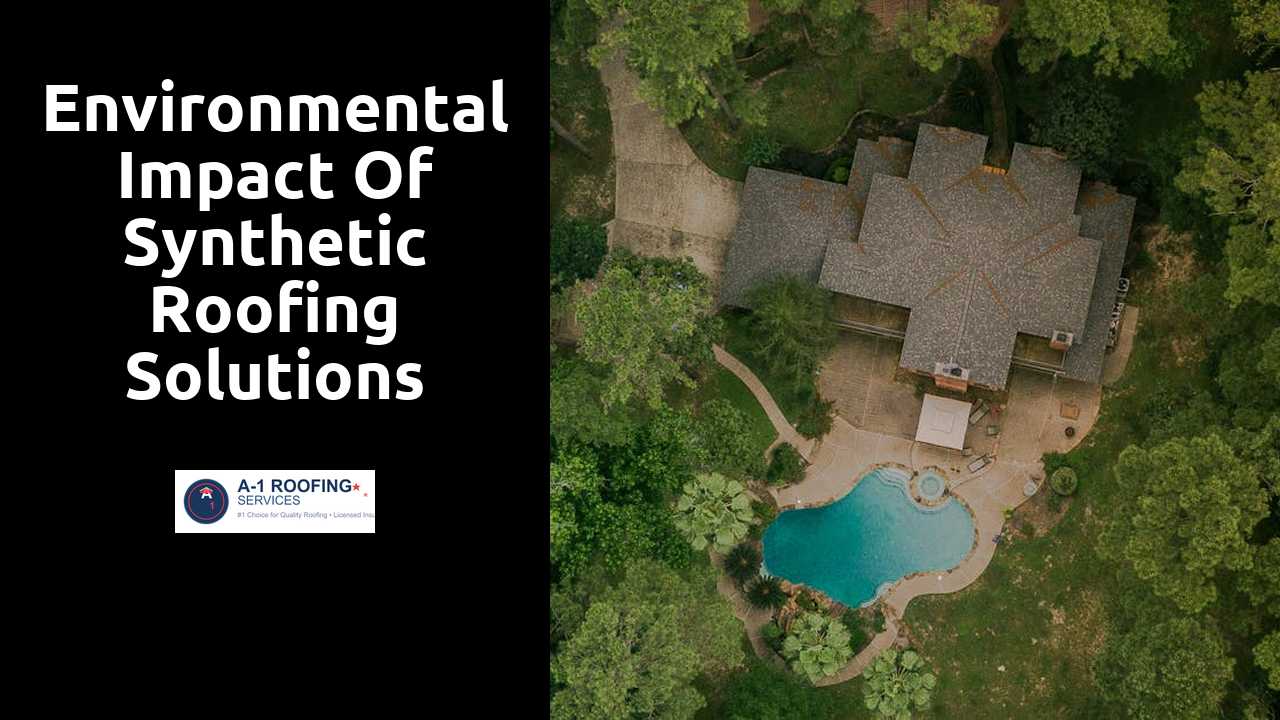
Environmental Impact of Synthetic Roofing Solutions
Table Of Contents
Recycling Potential of Synthetic Roofing
Synthetic roofing materials often contain recyclable components, contributing to a more sustainable building lifecycle. Various manufacturers are beginning to implement recycling programs that allow for the collection and repurposing of used roofing materials. Such initiatives help reduce landfill waste and decrease the environmental footprint associated with producing new materials. Innovations in material science have enhanced the recyclability of many synthetic options, enabling more efficient reclamation processes and improved conversion into new products.
The potential for recycling synthetic roofing extends beyond simple reprocessing. Closed-loop systems facilitate the continuous reuse of materials. This approach not only conserves resources but also minimizes the demand for new raw materials, leading to decreased energy consumption. As the industry evolves, there is a growing emphasis on designing products that maintain high standards of durability while remaining easily recyclable, fostering a culture of sustainability that benefits both manufacturers and consumers.
Navigate to these guys for detailed information.
Closed-Loop Systems in Roofing
Closed-loop systems in roofing represent a significant innovation in sustainable building practices. These systems allow for the recycling of materials used in synthetic roofing, minimizing waste and reducing the need for new raw materials. By collecting and repurposing materials at the end of their lifecycle, closed-loop systems contribute to a circular economy within the construction industry. This approach not only lessens environmental impact but also optimizes resource use, leading to both economic and environmental benefits.
Implementing closed-loop systems requires collaboration among manufacturers, contractors, and recyclers. It is essential for stakeholders to establish take-back programs and create standardized processes for material recovery. Such partnerships help ensure that synthetic roofing materials can be efficiently reused or recycled, preventing them from ending up in landfills. With continued advancements in technology and increasing awareness of sustainability practices, closed-loop systems are becoming more viable and prominent in roofing solutions.
Regulatory Standards for Synthetic Roofing
In the evolving landscape of construction materials, adherence to regulatory standards is paramount for synthetic roofing products. Various agencies, including the Environmental Protection Agency (EPA) and state-level regulatory bodies, set forth guidelines to ensure that these materials are safe, durable, and environmentally sound. Compliance with these regulations often influences the manufacturing process, dictating aspects like material composition, chemical emissions, and recycling protocols. The rigorous evaluations that synthetic roofing solutions undergo help in building consumer trust while fostering a market that prioritizes sustainability.
Manufacturers must also stay informed about local building codes and standards that pertain to energy efficiency and materials usage. Many jurisdictions mandate specific performance benchmarks that synthetic roofing products must meet to qualify for installation. This not only includes standards for thermal resistance and durability but also considerations surrounding environmental impacts, such as life-cycle assessments of materials. Through ongoing collaboration between manufacturers and regulatory agencies, advancements are being made to ensure that synthetic roofing solutions align with contemporary environmental concerns.
Compliance with Environmental Policies
Manufacturers of synthetic roofing materials must adhere to a variety of environmental regulations to ensure their products do not adversely affect ecosystems. These regulations often focus on reducing emissions during production, improving energy efficiency, and minimizing waste in landfills. Compliance with these guidelines is essential for companies seeking credibility and marketability in an increasingly eco-conscious industry. As governments impose stricter standards, businesses are challenged to innovate while remaining compliant.
Adhering to environmental policies can offer financial benefits alongside regulatory compliance. Companies may receive tax incentives or grants for using eco-friendly materials or engaging in sustainable practices, thereby offsetting production costs. Furthermore, consumers are becoming more selective, favoring brands that demonstrate a commitment to sustainability. Maintaining compliance not only mitigates legal risks but also aligns business strategies with growing market demands for green solutions in construction.
Case Studies of Sustainable Roofing Projects
Sustainable roofing projects around the country demonstrate the viability and benefits of synthetic roofing solutions. In a notable case in California, a community center replaced its traditional roofing with synthetic tiles designed to mimic wood. The transformation not only enhanced aesthetic appeal but also reduced energy consumption due to improved insulation properties. Such projects show that eco-friendly materials can effectively meet both functional and aesthetic requirements.
In another example, a commercial building in New York City adopted a synthetic membrane roofing system as part of a green retrofit project. The roofing materials selected were not only lightweight and durable but also contributed to better rainwater management. This effort not only advanced the building's sustainability profile but also achieved significant cost savings in maintenance. These case studies highlight the practical implications of incorporating synthetic roofing into architecture, underscoring their role in fostering greener urban environments.
Successful Implementations of Synthetic Solutions
In various urban environments, synthetic roofing materials have proven to be effective in enhancing sustainability while providing durability and longevity. Projects utilizing synthetic solutions have successfully reduced energy consumption and maintenance costs. For instance, a prominent municipal building in California adopted synthetic tiles that not only mimic traditional materials but also offer superior insulation properties. This innovation resulted in lower heating and cooling demands, contributing to a significant decrease in the building's overall carbon footprint.
Additionally, commercial installations have highlighted the benefits of synthetic roofing systems in terms of resource efficiency. A major retail chain implemented a synthetic roofing solution across multiple locations, leading to improved water run-off management and reduced stormwater pollution. These solutions demonstrated resilience against extreme weather conditions, assuring stakeholders of their long-term viability. As these case studies illustrate, the shift towards synthetic roofing materials reveals a promising avenue for sustainable construction practices.
Related Links
Top Brands in the Synthetic Roofing MarketCost Analysis: Synthetic Roofing vs. Other Materials